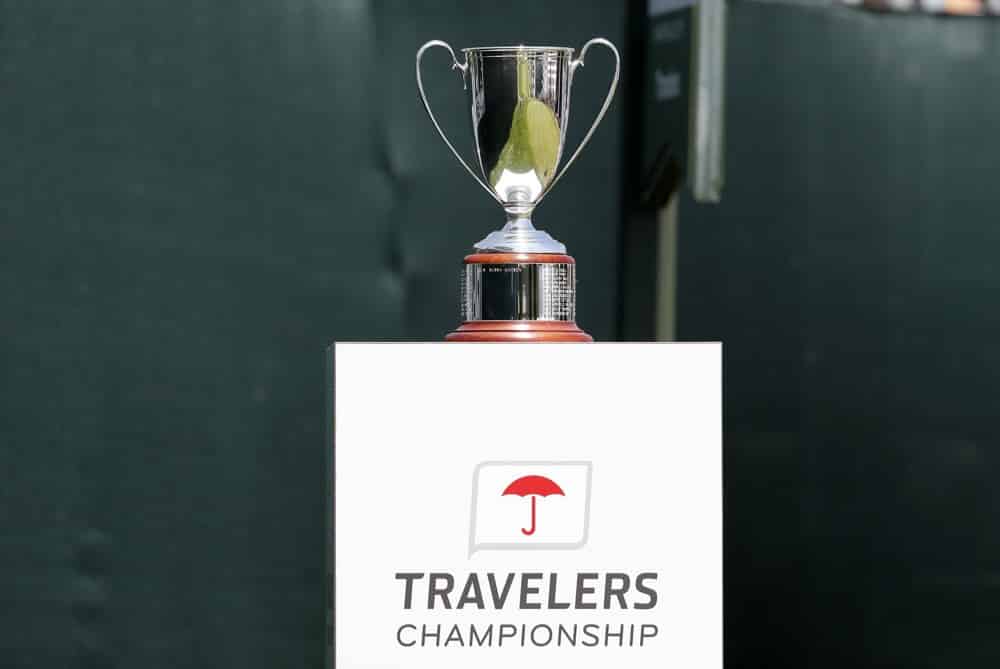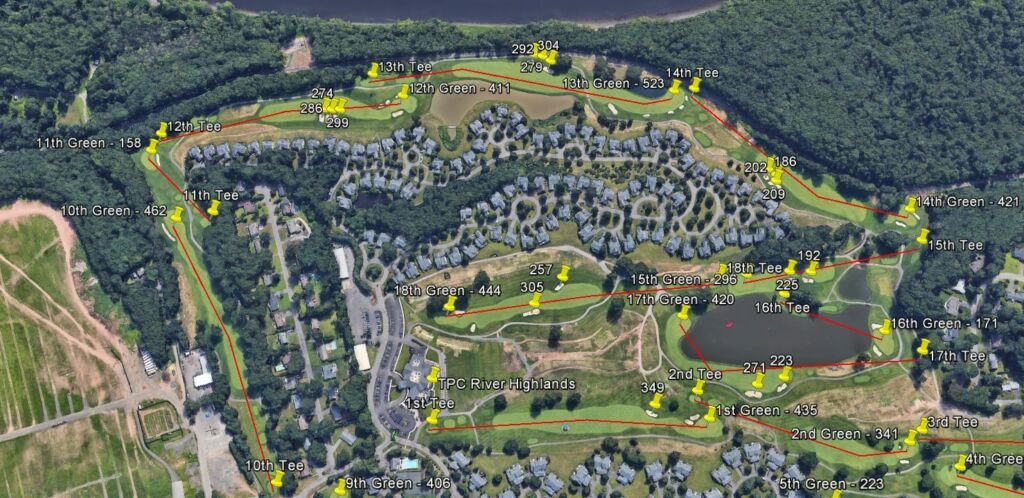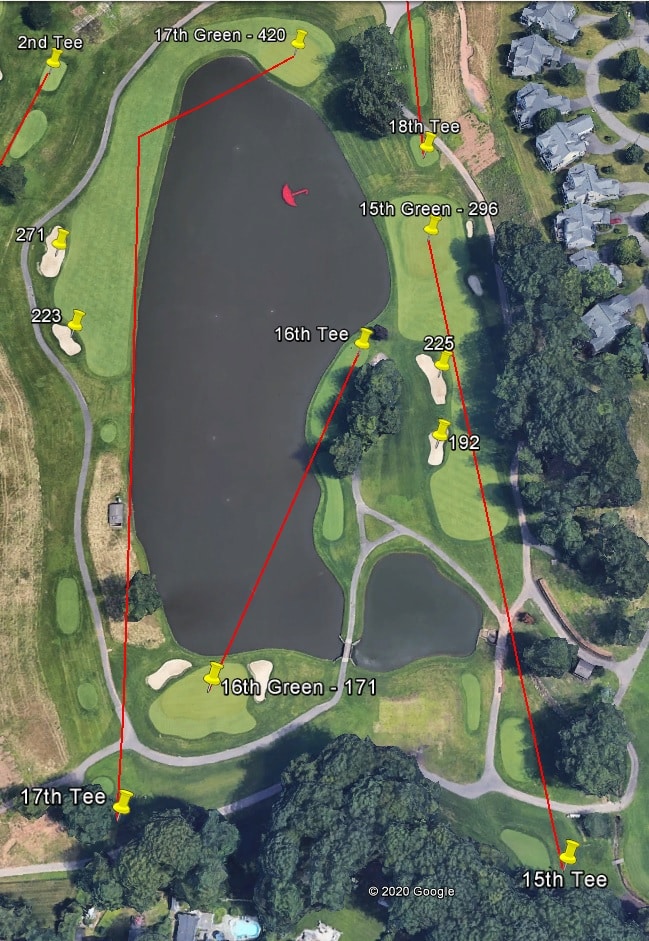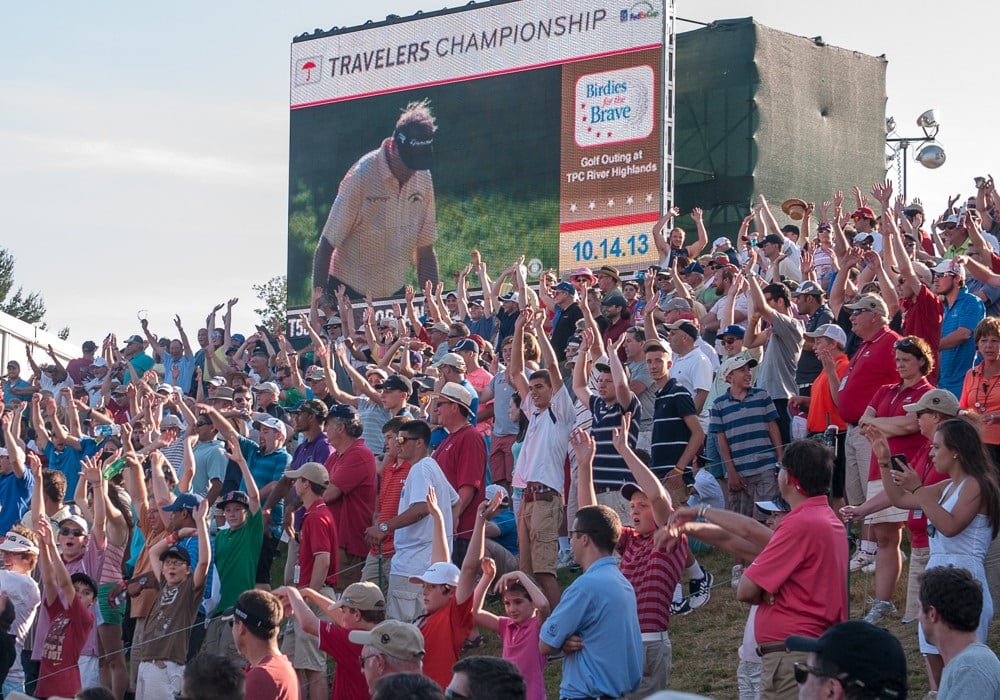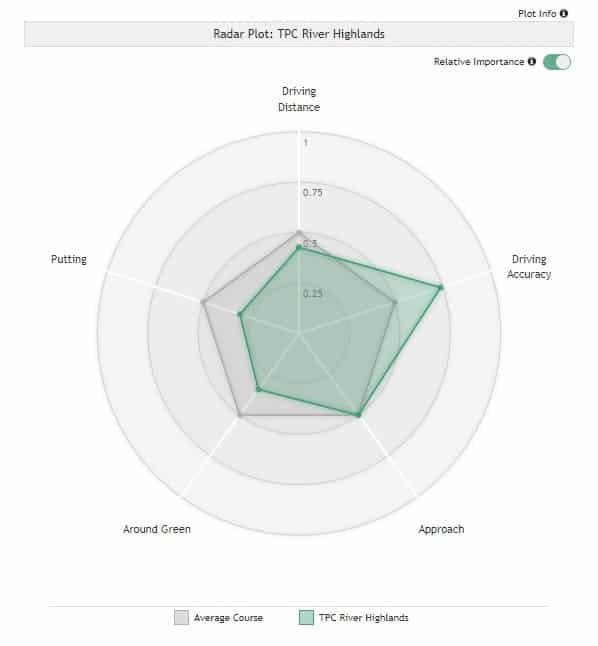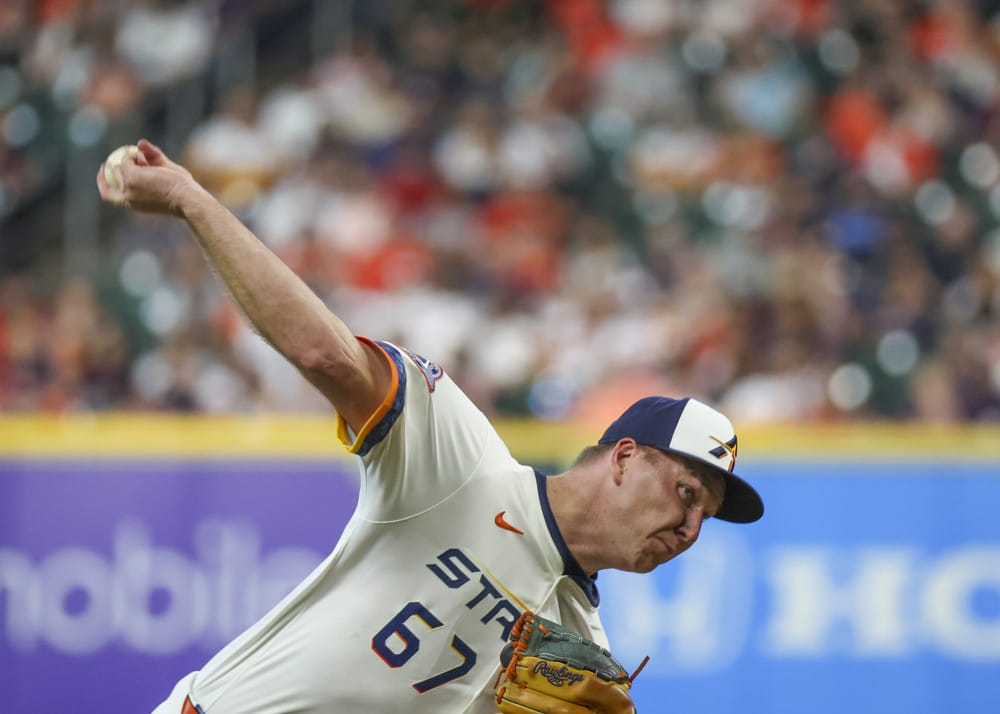After a birdie bonanza down in Hilton Head, the PGA Tour heads north for the Travelers Championship at TPC River Highlands in Cromwell, CT.
Here’s everything to know about the tournament before placing a single wager.
The Field
Despite its customary place on the schedule as the first tournament after the U.S. Open, the Travelers Championship had turned into one of the more popular events for top professionals to play. Between a fun golf course that suits multiple styles of play to an enthusiastic fan base, the strength of the field at the Travelers has improved in recent years.
The strength of this year’s field is only bolstered with forcing top golfers to play as much as possible to try and secure enough FedEx points in this jam packed modified schedule. Headlining the field are Rory McIlroy, Justin Thomas, Brooks Koepka, Jon Rahm, Dustin Johnson, Jordan Spieth, Bryson DeChambeau and last week’s winner Webb Simpson.
In addition, two top players who make their post-COVID break debut on the PGA Tour are Paul Casey and Patrick Cantlay. TPC River Highlands is one of Paul Casey’s best golf courses, as he has four Top 5 finishes in five career appearances at the tournament. As for Patrick Cantlay, he’s a little bit of the forgotten man because of his absence on the PGA Tour, but he has a solid history at TPC River Highlands and tends to play very well on other Poa/Bentgrass golf courses. He’s primed to remind the golf world just how talented he is.
However, the elephant in the room heading into this event is the first positive COVID test recorded on the PGA Tour, as Nick Watney tested positive for coronavirus last Friday. While all 11 COVID tests through contact tracing tested negative today, there’s still a mystery of how and where Watney contracted COVID or if the tests performed by the PGA Tour are reliably accurate. Hopefully the PGA Tour’s protocols will make him an isolated case, but there is some worry about more positive tests that could put the PGA Tour’s season in jeopardy once again. It also has created frustrating situations for gamblers to suddenly see a player they bet on withdraw due to a positive COVID test in the middle of a tournament.
For the full field, click here.
The Golf Course
For years this tournament was known as the Greater Hartford Open, first played in 1952 at Weathersfield Country Club. In the 1980’s, the PGA Tour bought the former Edgewood Country Club and rebranded it as part of their TPC golf course network. They brought in the legendary Pete Dye to rebuild the golf course and dubbed it TPC Connecticut. The tournament has been played there ever since.
In 1989, the golf course underwent a major renovation spearheaded by Pete Dye disciple Bobby Weed, with consultation from PGA pros Howard Twitty and Roger Maltbie. Though the thought of improving upon a Pete Dye golf course is hard to fathom, they managed to do so. Their newest design took the Back Nine down a valley near the train tracks that run alongside the Connecticut River. The renovation was completed in 1990, and the golf course was renamed TPC River Highlands.
To be blunt, the front mine at TPC River Highlands isn’t anything to write home about. There isn’t much trickery over the first nine holes, everything is almost all out in front of the player, and besides the 2nd hole there is very little elevation change tee-to-green. There are some slight resemblances to the typical Pete Dye golf course experience, primarily with regard to bottlenecking of the fairways in landing zones, inconveniently placed bunkers and green complexes angled away from the directional path of the hole to emphasize accuracy off the tee. I’ve never played TPC River Highlands so take my opinion with a grain of salt, but after charting the golf course I don’t feel very inspired by the front nine.
The back nine, however, is a totally different story. This side of the golf course feels like an adventure during the trek from 10 to 18. The challenge begins with No. 10, a hole that features a very narrow corridor off the tee that opens up about 300 yards down the fairway. Anyone who can manage to hit it over all the trees (see three time winner Bubba Watson) has a tremendous advantage than anyone who’s forced to lay up off the tee.
No. 11 is a downhill Par 3, with the green sitting about 50 feet below the tee box. While the yardage is short, players will have to account for the drop in elevation as well as avoid any of the three bunkers that surround the small green. After this, the players will play the short Par 4 12th and Par 5 13th. The 12th does not offer much room for error off the tee with OB on the left and three fairway bunkers on the right into a bottlenecking fairway. On the 13th, OB remains on the left, and the players will have to navigate the large water hazard all the way down the right side of the hole. The 14th requires the player to hit a blind tee-shot to a top of the hill, followed by a downhill approach shot to a small green.
The Travelers Championship has the reputation of producing very exciting finishes to their tournaments, and the stretch from 15-18 is the reason why:
Holes 15-17
This stretch of holes is one of the best viewing spots for anyone who does not own a home off one of the fairways. The best place to be is to the right of the 16th green, as the spectator can watch the players play the exciting and drivable Par 4 15th, the Par 3 16th over the water and the 17th that features a forced carry over same said water and a green with a false front. Here is where the tournament usually tightens up, either with a player getting red hot over this stretch or someone who makes a mess of these holes.
18th Hole – 444 Yards
While the design of the hole is nothing special, it’s the huge fan base that sits in an amphitheater setting that makes this hole memorable. Hartford has some of the best fans on the PGA Tour, and the whole community treats this event as if the Whalers have been resurrected. As someone who also lives in a minor league sports town, I can totally relate how passionate they are for their tournament. Whenever a huge sporting event comes into town, it dominates the headlines and creates a buzz in the city. And as shown back in 2017, they can get pretty excited around that 18th green…
There are many things that have been terrible as the COVID pandemic sweeps across the country, but it’s a downright shame that the passionate fans of Hartford will not be on the golf course this week. It’ll certainly take away the electricity of the event, but hopefully they’ll be back in full force in 2021.
Betting Strategies
TPC River Highlands is the shortest golf course the players will take on this year on the PGA Tour. It’s just over 6,800 yards long, meaning that many players can opt to leave driver in the bag and not sacrifice much off the tee for a comfortable approach yardage into the green. The fairways, greens and rough are a combination of poa annua and bentgrass, a common grass type for most Northeastern golf courses. There also has been very little rain over the last few weeks, but the golf course should still be soft because of all the water the maintenance crews will dump on it to keep the grasses green and lush.
Over the first two weeks since the PGA Tour has been back, they’ve played golf courses that traditionally were considered “less-than-driver”. At both Colonial and Harbour Town, the golf course traditionally is well protected by bunkers, doglegs and trees. While Harbour Town did a much better job making players club down and play positional golf off-the-tee, several players found success at Colonial by overpowering it.
TPC River Highlands will fall more on the spectrum of Colonial and is better equipped to allow someone to take aggressive lines off the tee to overrun it. Though there has been some repositioning of fairway bunkers over the last few years to better protect the golf course, a long player can bomb it over them with only the worry of their tee shot landing in the rough for a short shot into the green. For the most part, thick forest areas are well off the fairways and only accessible with very off line tee shots. There’s also not that many penal areas awaiting errant drives at TPC River Highlands, though there are some opportunities to get in trouble on the back nine.
These are some of the reasons why when one looks at recent leaderboards it’s full of golfers with varying degree of skill sets. Bubba Watson is considered the horse-for-the-course with three wins, and he employs a bomb and gouge style of play to take aggressive and creative lines with his driver to gain an advantage over the field. Jim Furyk owns the course record with a 58 in 2016, and he is known as a short, accurate tactician who’s strengths are with his wedges. Defending champion Chez Reavie is one of the shortest hitters on the PGA Tour, yet ranked 53rd in Strokes Gained – Off-the-Tee in 2019 because he is so accurate and almost never misses fairways. And players like Russell Knox and Jordan Spieth, winners of 2016 and 2017, are considered good all-around ball-strikers tee to green.
The common denominator of all these players when looking at past leaderboards is that solid performance off the tee is a very important factor to look at this week, no matter how a player does it. This is evident in a the relative skill set plot chart for TPC River Highlands
Performance off-the-tee will take on a little bigger importance than it has the last two weeks, with putting and short game taking a little bit of a back seat. While accuracy takes a huge importance overall at the golf course, that’s only really applicable to those who are considered shorter hitters. Longer hitters will be able to gouge shorter iron out of the rough for good looks at birdie. For shorter players off-the-tee, they still stand a great chance of success at TPC River Highlands because the golf course is so short and they will have a short or mid-iron in hand for their second. However, they absolutely must hit the fairway to maintain their advantage. Shorter hitters hitting their second shot frequently out of the rough is never a recipe for success.
In terms of horses for courses, players with at least 12 rounds at TPC River Highlands who have gained more than 1.5 strokes per round on the field include Paul Casey, Ryan Moore, Bubba Watson, Bryson DeChambeau and Jason Day. Bubba Watson, Bryson DeChambeau and Jason Day are notoriously long hitters and fit the mold of a “bomb and gouger” that do well at the golf course. Ryan Moore is considered a shorter, more precise player who is allowed to have success at the golf course with his high driving accuracy and the ability to hit mid to short irons into greens. And Paul Casey is a great all-around player who possesses a deadly combination of length and accuracy off-the-tee.
Lastly, the closest correlated golf courses on the PGA Tour in terms of relative skill sets to TPC River Highlands include East Lake Golf Club, TPC Deere Run, Sea Island, Muirfield Village, Innisbrook Resort and Sedgefield Country Club. Players in the field this week with great results on these golf courses include Jordan Spieth, Webb Simpson, Ryan Moore, Jim Furyk, Sergio Garcia, Billy Horschel and Justin Rose. That doesn’t mean you have to necessarily pick these players, but rather provides a template of the types of golfers who are expected to play well at TPC River Highlands.


